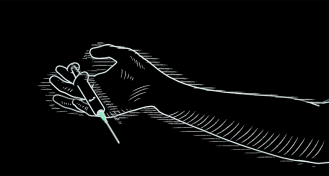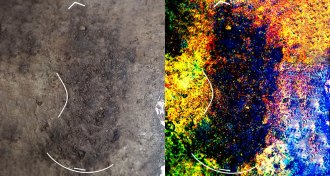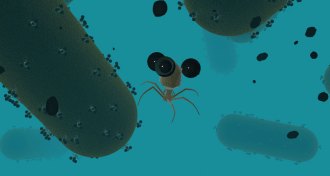Uncategorized
-
 Health & Medicine
Health & MedicineOpioids kill. Here’s how an overdose shuts down your body
Powerful opioids affect many parts of the body, but the drugs’ most deadly effects are on breathing.
-
 Materials Science
Materials ScienceLive heart cells make this material shift color like a chameleon
A new material made of heart cells from rats and hydrogel changes color as the living cells contract and relax.
-
 Archaeology
ArchaeologyFootprints put people on Canada’s west coast 13,000 years ago
Island tracks indicate early New World settlers traveled down the North American Pacific coast about 13,000 years ago.
By Bruce Bower -
 Neuroscience
NeuroscienceBrain waves of concertgoers sync up at shows
During a live musical performance, audience members’ brain waves get in sync.
-
 Astronomy
AstronomyDark matter is MIA in this strange galaxy
A galaxy without dark matter bolsters the case that the invisible substance really exists.
-
 Neuroscience
NeuroscienceParents’ presence promotes a child’s pluck
Parents’ presence or absence during a learning exercise determines whether their child is fearful later, or willing to explore.
-
 Health & Medicine
Health & MedicineKid-friendly e-cigarette ads appear to work
Teens who hadn’t used tobacco products but were receptive to e-cigarettes ads were more likely to try vaping or smoking.
-
 Earth
EarthPowerful New England quake recorded in pond mud
The newfound sediment signature of the 1755 Cape Ann earthquake could be used to trace other prehistoric temblors.
-
 Life
Life‘Nanobot’ viruses tag and round up bacteria in food and water
Viruses called phages evolved to hunt bacteria. With magnetic nanoparticles and genetic engineering, they become nanobots that work for us.
-
 Planetary Science
Planetary ScienceWater may have killed Mars’ magnetic field
Extra hydrogen near the Red Planet’s iron core could have shut down convection.
-
 Neuroscience
NeuroscienceWhen tickling the brain to stimulate memory, location matters
Conflicting results regarding the benefits of brain stimulation may be explained by the precise location of electrodes.
-
 Anthropology
AnthropologyModern chimp brains share similarities with ancient hominids
MRIs suggest certain brain folding patterns don’t mark ancient humanlike neural advances after all, raising questions about hominid brain evolution.
By Bruce Bower